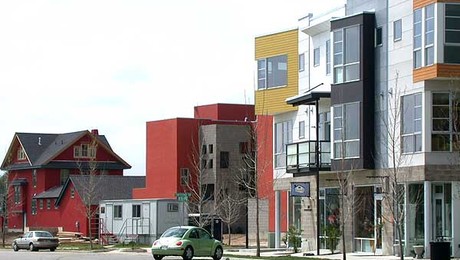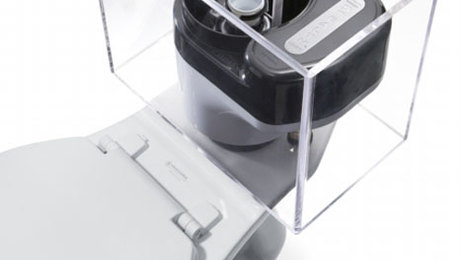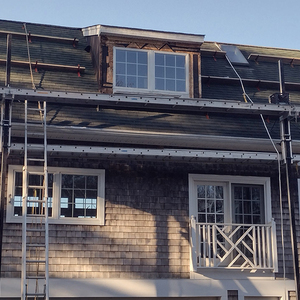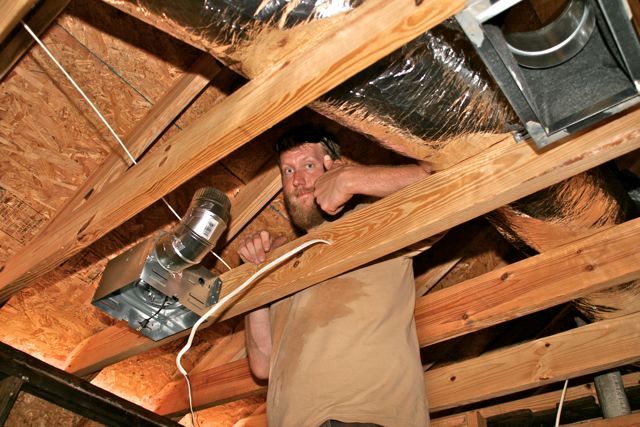
Still stirring from the DOE Weatherization conference, I’ll review the energy efficiency strategies that Michael Blasnik says saves money in homes.
But first, Read my blog post about flawed computer models that gauge energy savings.
The whole idea here is that computer models are a great way to track energy efficiency measures, but a computer is not needed for determining the upgrades that will make a significant difference in energy usage. People with the right knowledge and some diagnostic equipment can do the trick. So what can make a big impact on home energy bills? Remember, as I said in my last blog post, the more energy a home uses the bigger the energy savings can be after upgrades. On average there is a 15% linear relationship when comparing energy usage before upgrades to energy savings, so don’t expect 50% savings from typical energy efficiency upgrades in a 1000 square foot home with $50 per month utility bills. So here’s what Blasnik shared:
- Adding insulation to uninsulated walls and partially insulated attics.
Insulation works. Imagine that. Insulating uninsulated walls can save on average 0.2 therms per square foot per year. A therm is a unit of heat energy and equal to 100,000 BTUs (British thermal units) and the product of burning about 100 cubic feet of natural gas. Therms are what the natural gas companies bill you for. The US average cost per therm for natural gas is $1.11. I’ll round that to one dollar for simplicity’s sake. In this case, 0.2 therms per square foot per year would yield a cost savings of around $400 per year for a 2000 square foot home. The colder the region, the higher the savings for heating efficiency measures. Blasnik says that adding insulation to uninsulated walls is very cost effective but energy models underestimate the effects by 50-70% because the R-value of the entire wall assembly is underestimated. Continuous sheathing and air film can add R-3.5 to 5 to a wall, which makes a exponential difference in heat transfer in an uninsulated wall. The critical caveat to this strategy is the next bullet point-> - AIR SEALING!
The rated R-value of insulation will be undermined if air infiltration is present in walls and attics. Check out Energy Star’s Thermal Bypass Checklist for places to look for energy loss. This can save 5-8 therms per every 100 CFM50 in reduced air leakage. What that means is that tightening up a home’s envelope by 100 units at CFM50 (measured with a blower door test) will save around $5-8 annually. The tighter a home, the more savings can rack up. The best way for teams to effectively locate air leaks is with a blower door creating a pressure difference. This can be very cost effective in very leaky homes that measure more than 3000 CFM50 of leakage. There is a critical caveat here as well. If a home is tightened up and insulation is added, there could be a ticking time bomb waiting to slowly explode – moisture issues throughout the home. Indoor humidity must be controlled. Air sealing is another measure that is underestimated by 50-70% in energy calcs due to overstated wind-effects and the fact that the particular model used to crunch this ignore thermal regain in attics and foundations. - Additional measures for home envelopes in hot climates.
If cooling equipment ductwork is located in an attic above the thermal envelope, then a radiant barrier applied to the roof can save 10-20% on cooling load annually. The take away here is to keep the hot sun out of homes. Again, not rocket science, but measures such as shading and window film can be effective from 10-30% depending on shading outside the home. - HVAC.
Replacing inefficient heating systems is effective in high heating load regions and replacing inefficient cooling systems is effective in high cooling load areas. Again, the biggest users are going to be the biggest savers. For heating, the industry baseline for replacement in natural gas units is savings of 1000-1600 therms per year. 20% energy savings can be seen by replacing a unit at 75% efficiency with one that operates at 92%. Computer models project 30% lower savings than actually seen because old furnace efficiency is underestimated at 60-65% instead of the more realistic 75%. Air conditioner replacement is only cost effective if the home has a very high cooling load. Most cooling costs are typically below $1000 per year even in the warmest US climates. Sealing ductwork outside insulated and conditioned space could save between 6-20% of HVAC costs. An air conditioner tune up could save 5-12% if the contractor knows what they are doing and accurately measures the charge of the system. For cooling equipment replacement, it makes the most sense to target energy hog systems and very high use situations. - Hot water systems.
Fix leaks! Also, high efficiency clothes washers can save 800 kWh/35 therms per year along with 11,000 gallons of water. (Average cost per kiloWatt hour in the US is $0.0125.) Again, savings will depend on usage: the more loads of laundry, the more potential savings. Very low flow shower heads with flow rates between 1.5-1.75 gallons per minute can save up to 8-15 therms per year per shower. - Refrigerator replacement. A piece of equipment called a Watt Meter can measure the energy usage of a fridge. If a fridge is an energy hog, it will be obvious quickly and replacing bad ones can save 600-900 kWh per year for typical older models and up to 2000kWh per year for the most inefficient ones. Once again, measured energy savings are not accurate more than likely due to testing issues.
- Lighting.
Replacing incandescents with CFLs can save 15-50 kWh per year. These can still be a cost effective measure even though they save 50% less than projected due to burnout, removal and increased use by homeowners because the bulb is more efficient. Furthermore, incandescents are like little personal space heaters, adding to the home’s heating ability in the winter. This decrease in heat must be accounted for. Motion detectors for exterior safety lighting can also be a big energy saver. - Phantom load. Unplug unneeded stuff! It doesn’t help cooling to leave an air handler motor running continuously in the summer. In fact, running the fan in your HVAC system all the time in the summer could pick up hot, humid air from holes in ductwork that is outside the insulated space and deposit that into the conditioned areas of you home. 3000 kWh per year can be saved by moving the fan switch on your thermostat to the auto setting. If you really don’t need a secondary fridge or freezer, get rid of it to save 400-2000 kWh per year.
These analytics from Blasnik and Associates is clearly enlightening and useful to the masses. As an ecologist, paying attention and observing reality makes a lot of sense to me, as does the LARGE size of the data sets which Blasnik uses as a base for his conclusions. I heard someone say that green bling is not what’s necessary to move this market along, but the main weapons in this war towards a greener planet are knowledge, ability, caulk guns and cans of foam.
For more Green Building ideas, visit Rob Moody’s blog at Green Building Advisor.
![]()
Fine Homebuilding Recommended Products
Fine Homebuilding receives a commission for items purchased through links on this site, including Amazon Associates and other affiliate advertising programs.

8067 All-Weather Flashing Tape

Affordable IR Camera

Reliable Crimp Connectors
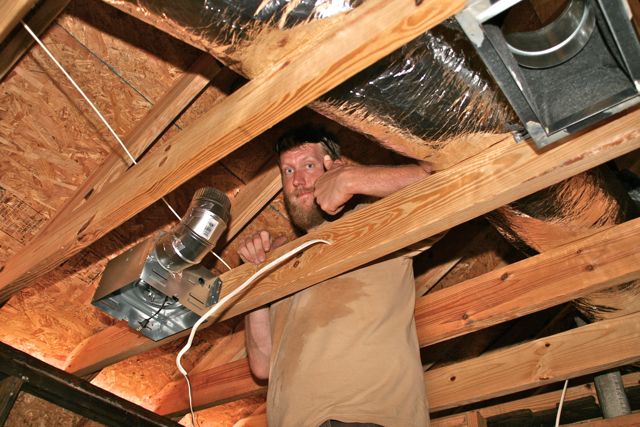
Have I mentioned that New Orleans is a hot + humid climate. My colleague and good friend, Paul Bobbitt installing a rigid bath fan duct in the Big Easy.
